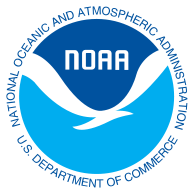Laymen can have a tough time following complex stories such as climate change, particularly when the media and opponents characterize new findings or revisions as examples of uncertainty, rather than of science as evidence-based consensus building. This false discord is often then used to lend weight to “alternative” views. The American public is not unique in this regard, and recently Australian climate scientists have had to cope with similar issues as parliament began debating their own climate legislation.
Contributing to this problem, is a general lack of awareness of what the current state of climate research is. Models and geoclimatic records—like tree or ice cores—seem to receive the most coverage, as well as speculation based on freak weather events, even though weather is not climate. This is somewhat understandable if one still truly believes there is a debate about the existence of rising CO2 and a related warming trend, yet there is not. Consequently, the wide variety of direct experimentation on the effects of these phenomena receives little attention.
After unforeseen difficulties in regulating its atmosphere caused the initial experiment at Biosphere 2 to be closed down, administration of the facility was passed on to Columbia University and now the University of Arizona. Both universities have used the space to conduct unique experiments (video link) into the effects of increased atmospheric carbon dioxide on a variety of ecosystems, and the news is not good.
Yet whether or not “US crop yields will wilt in heat,” it is indisputable that burning fossil fuels produces CO2. Meanwhile, scientists continue to gather evidence that “carbon fertilization,” or increased plant growth due to greater availability of carbon dioxide, many not be the boon we might hope for. Just last month, a paper was released indicating that the nutritional quality of wheat decreases when grown under high CO2 conditions. The more we learn, the more it becomes clear that we’re running great risks by treating the atmosphere as a limitless garbage dump.
On a related note, Presidential science advisor John Holdren recently gave a nice interview at New Scientist, wherein he answers many questions about ACES and global warming.


 Recently, Congress decided that
Recently, Congress decided that 